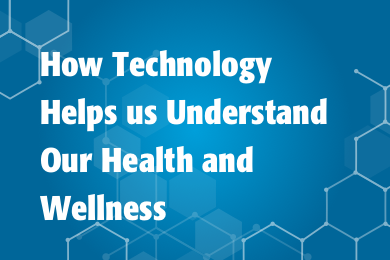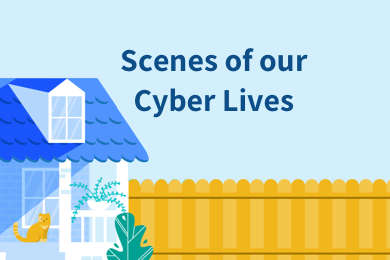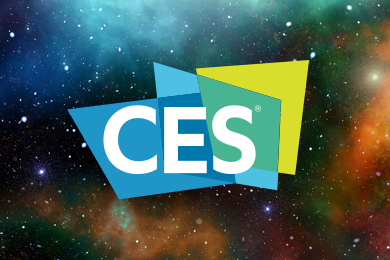May 17, 2018
Farms vary widely in size, but ones at the larger end of the spectrum are truly massive: a handful around the world now surpass the 3-million-acre mark, with some even topping 20 million acres. For IoT-connected agricultural equipment to be useful over that much acreage, the power and quality of wireless transmission is especially important. And success in that capacity hinges on the development and installation of new 5G (and, in the future, 6G) networks.
“If we narrow our focus to the breakthroughs really necessary to make [the IoT] work properly and allow for the diffusion of the technology, an obvious choice is the telecommunications platform, and, in particular, 5G functionalities,” says Raul Colcher, Life Senior IEEE Member and CEO Questera Consulting in Brazil.
5G has generated a lot of buzz over the past three years. There’s an IEEE Future Directions initiative on it that includes the creation of standards, and IEEE Spectrum has covered everything from the basics of 5G to who’s implementing it when. In short, 5G networks will be able to handle 1000x more traffic than 4G, and could be up to 10x faster. The exact nature of 5G is still in development, but shorter waves transmitted by small cell base stations seem likely.
Given the distance the signals need to cover on a massive farm, there’s the question of powering the remote sensors so they can transmit their data. Just a few years ago, it was difficult to imagine a small, long-range, low-cost sensor (the common refrain “pick two” would’ve been applicable). Advances in battery technology and the efficiency of devices is allowing for smaller and cheaper options that last longer, and engineering to solve these problems will have benefits that carry over to consumer electronics.
If 5G does indeed persist as the preferred platform of the IoT, it “will bring less expensive 5G enabled sensors and actuators, which will be progressively incorporated into items offered in retail stores. This will facilitate the extension of purchase information and consumer support to the customer’s home,” says Colcher.
Central to the idea of using sensors in stores is the inclusion of an RFID tag in the packaging of products. A single RFID tag could integrate with multiple applications through a 5G network (managing that access is the subject of this paper on IEEE Xplore), allowing shoppers to verify the authenticity of a product, its manufacturing date, or any number of factors, which has promising implications for transparency.
It’s exciting that each of these technologies stands to improve the world individually, and that their effects could well be amplified when used in tandem.





 Meaningful Momentum or Running in Place?
Meaningful Momentum or Running in Place? AI Through Our Ages
AI Through Our Ages Liquid Infrastructure: Our Planet's Most Precious Resource
Liquid Infrastructure: Our Planet's Most Precious Resource The Impact of Technology in 2025
The Impact of Technology in 2025 Quantum and AI: Safeguards or Threats to Cybersecurity?
Quantum and AI: Safeguards or Threats to Cybersecurity? Why AI Can't Live Without Us
Why AI Can't Live Without Us Bits, Bytes, Buildings and Bridges: Digital-Driven Infrastructure
Bits, Bytes, Buildings and Bridges: Digital-Driven Infrastructure Impact of Technology in 2024
Impact of Technology in 2024 Emerging AI Cybersecurity Challenges and Solutions
Emerging AI Cybersecurity Challenges and Solutions The Skies are Unlimited
The Skies are Unlimited Smart Cities 2030: How Tech is Reshaping Urbanscapes
Smart Cities 2030: How Tech is Reshaping Urbanscapes Impact of Technology 2023
Impact of Technology 2023 Cybersecurity for Life-Changing Innovations
Cybersecurity for Life-Changing Innovations Smarter Wearables Healthier Life
Smarter Wearables Healthier Life Infrastructure In Motion
Infrastructure In Motion The Impact of Tech in 2022 and Beyond
The Impact of Tech in 2022 and Beyond Cybersecurity, Technology and Protecting Our World
Cybersecurity, Technology and Protecting Our World How Technology Helps us Understand Our Health and Wellness
How Technology Helps us Understand Our Health and Wellness The Resilience of Humanity
The Resilience of Humanity Harnessing and Sustaining our Natural Resources
Harnessing and Sustaining our Natural Resources Creating Healthy Spaces Through Technology
Creating Healthy Spaces Through Technology Exceptional Infrastructure Challenges, Technology and Humanity
Exceptional Infrastructure Challenges, Technology and Humanity The Global Impact of IEEE's 802 Standards
The Global Impact of IEEE's 802 Standards Scenes of our Cyber Lives: The Security Threats and Technology Solutions Protecting Us
Scenes of our Cyber Lives: The Security Threats and Technology Solutions Protecting Us How Millennial Parents are Embracing Health and Wellness Technologies for Their Generation Alpha Kids
How Millennial Parents are Embracing Health and Wellness Technologies for Their Generation Alpha Kids Space Exploration, Technology and Our Lives
Space Exploration, Technology and Our Lives Global Innovation and the Environment
Global Innovation and the Environment How Technology, Privacy and Security are Changing Each Other (And Us)
How Technology, Privacy and Security are Changing Each Other (And Us) Find us in booth 31506, LVCC South Hall 3 and experience the Technology Moon Walk
Find us in booth 31506, LVCC South Hall 3 and experience the Technology Moon Walk Virtual and Mixed Reality
Virtual and Mixed Reality How Robots are Improving our Health
How Robots are Improving our Health IEEE Experts and the Robots They are Teaching
IEEE Experts and the Robots They are Teaching See how millennial parents around the world see AI impacting the lives of their tech-infused offspring
See how millennial parents around the world see AI impacting the lives of their tech-infused offspring Take the journey from farm to table and learn how IoT will help us reach the rising demand for food production
Take the journey from farm to table and learn how IoT will help us reach the rising demand for food production Watch technical experts discuss the latest cyber threats
Watch technical experts discuss the latest cyber threats Explore how researchers, teachers, explorers, healthcare and medical professionals use immersive technologies
Explore how researchers, teachers, explorers, healthcare and medical professionals use immersive technologies Follow the timeline to see how Generation AI will be impacted by technology
Follow the timeline to see how Generation AI will be impacted by technology Learn how your IoT data can be used by experiencing a day in a connected life
Learn how your IoT data can be used by experiencing a day in a connected life Listen to technical experts discuss the biggest security threats today
Listen to technical experts discuss the biggest security threats today See how tech has influenced and evolved with the Games
See how tech has influenced and evolved with the Games Enter our virtual home to explore the IoT (Internet of Things) technologies
Enter our virtual home to explore the IoT (Internet of Things) technologies Explore an interactive map showcasing exciting innovations in robotics
Explore an interactive map showcasing exciting innovations in robotics Interactively explore A.I. in recent Hollywood movies
Interactively explore A.I. in recent Hollywood movies Get immersed in technologies that will improve patients' lives
Get immersed in technologies that will improve patients' lives